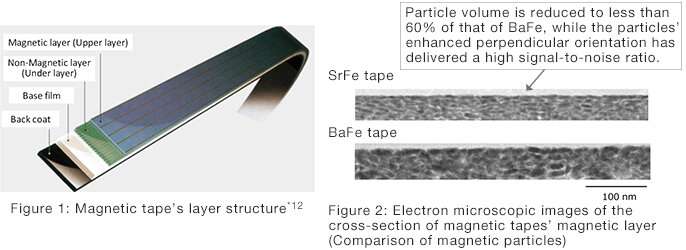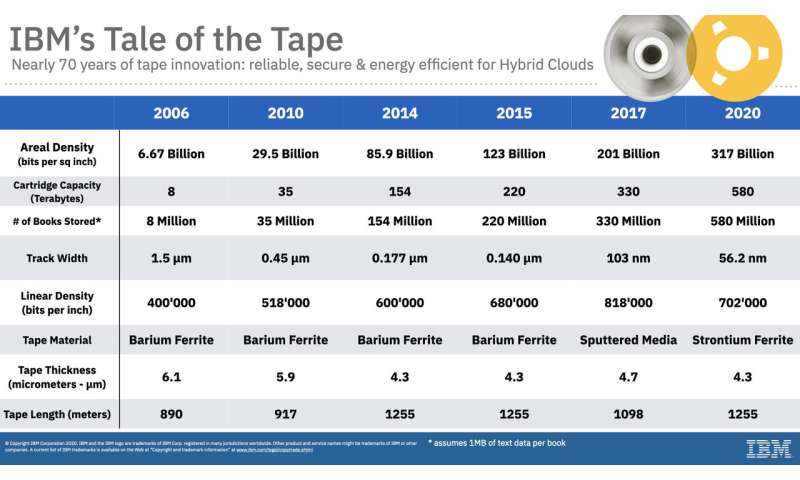
When it comes to magnetic tape storage capacity, smaller is larger. That is, as the magnetic particles that store data become smaller, more data can be stockpiled in the same amount of space.
Two leading tech giants put that simple principle to work and announced Wednesday that they have developed a magnetic tape cartridge boasting the most dense storage capacity of any media in the world. Fujifilm and IBM say research into a new material, strontium ferrite, led to the creation of a tape cartridge capable of storing 580 terabytes of data. That’s enough to store roughly 580 million books, according to an IBM blog post published Wednesday.
Considering there are about only 130 million books in existence today, that’ll leave plenty of room for extras.
To look at it another way, it would take 86,977 CDs (which, if stacked, would be taller than the world’s tallest building, the Burj Kalifa in Dubai) to match the capacity of a single strontium ferrite cartridge that is smaller than your hand.
Magnetic tape is not new. German engineer Fritz Pfleumer experimented with metal strips of ferric oxide particles glued to long strips of thin cigarette papers, leading to his invention of the first magnetic recording tape in 1928. Magnetic tape was first used to store computer data on the UNIVAC I in 1951.
Magnetic tape technology has long been the preferred means of storage for companies handling massive volumes of information. In addition to increasingly large storage capacities, magnetic tape costs are lower than for hard drives—as low as pennies per gigabyte. Unlike hard drives, they require no continuous source of power. In addition, magnetic tapes are physically separated from the data network and therefore provide a much more secure environment. This air gapping—ensuring one backup copy of critical data is offline at all times—means critical information is not vulnerable to cyberattack threats.

Strontium ferrite would replace barium ferrite, which has been used as a tape component for more than a decade. Barium ferrite, with a density of more than 123 billion bits per square inch, is used in 220 terabyte drives.
The Fujifilm-IBM teams were able to create new nano-sized particles by manipulating the addition of trace elements and blending materials more efficiently. They came up with the new technology using strontium ferrite particles that can be bundled at 317 billion bits per inch in 580 terabyte drives.
But it is not just the smaller particle size that is responsible for the new cartridge’s great potential. The Fujifilm and IBM teams designed a low-friction tape head with extraordinarily precise positioning management that enables unprecedented accuracy in data reading.
IBM’s Advanced Tape Technologies Manager Mark Lantz wrote, “Just let me geek out for a second: When tape is being read, it is streamed over the head at a speed of about 15 km/h and with our new servo technologies, we are still able to position the tape head with an accuracy that is about 1.5 times the width of a of DNA molecule.”
Although it may be many years before this prototype can be manufactured large scale, it is sure to play a key role in the ever-expanding field of data storage. According to Lantz, some 2.5 quintillion bytes of data are produced daily worldwide. It is expected that in five years, the number will grow to 175 zettabytes, which is equal to 175 trillion gigabytes.
To put it mildly, data storage will be a growth industry for a long time to come.
www.ibm.com/blogs/research/202 … tape-density-record/